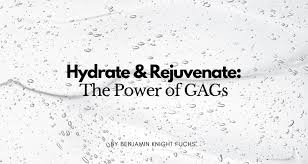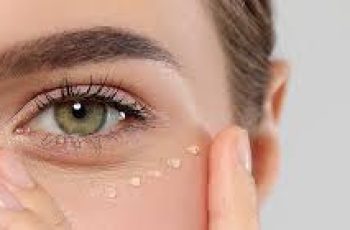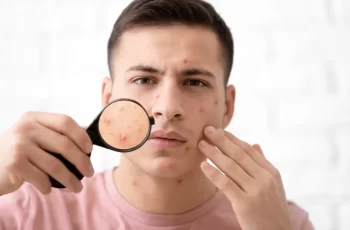
Glycosaminoglycans in Skin and Skin Care Products
Glycosaminoglycans (GAGs) are sugars in your skin that bind water. These important skin components are found in skin care products and dermal fillers because they give skin a young plump appearance that is sometimes called jello skin.
To know if you need glycosaminoglycans like hyaluronic acid and heparan sulfate in your skincare routine- shop by your Baumann Skin Type.
Take the Quiz
16 Skin types
What are GAGs?
GAGS are chains of sugars in the skin known as polysaccharides. They link to a core protein forming proteoglycans.
Proteoglycans form an infrastructure in your skin and provide the environment that surrounds skin cells. This extracellular matrix (ECM) is critical for skin cells like fibroblast to function properly.
GAGs are like long, sticky chains made of sugars. Think of them like the beads on a necklace, where each bead is a sugar molecule. These chains are found in our skin, joints, and other parts of our bodies. In the skin, GAGs help keep it hydrated and bouncy because they can hold onto a lot of water. Just like a sponge soaks up water, GAGs do the same for our skin, making it look fresh and feel soft. It also provides a water filled environment for cell signals like growth factors and exosomes to move around and influence skin cells.
What do Glycosaminoglycans Do in the Skin?
GAGs are so important to skin health. They do many things for the skin:
Bind water
Contribute to salt and water balance
Provide an infrastructural matrix that fibroblasts adhere to
Affect fibroblast movement and function
All communicating molecules to move easily from cell to cell
Which Skin Care Products Have GAGs
Products with HA
Hyaluronic acid is a very popular antiaging ingredient in skin care. It hydrates skin, helps other products penetrate better, and plump up fine lines and wrinkles with its humectant properties.
However, topically applied HA does not get into the skin very well unless it is small pieces of the HA chain that have a low molecular weight. Most HA serums have many different sizes of HA chains in them.
Here are some of our favorite dermatologist-approved HA Serums:
Alastin HA Immerse Serum
Skinceuticals HA Intensifier
PCA Skin Hyaluronic Acid Boosting Serum
Filorga HYDRA-HYAL Intensive Hydrating Plumping Concentrate
Lorem ipsum dolor sit amet consectetur adipisicing elit. Illum neque eaque, autem sit soluta, voluptatum libero magnam tempore ullam at harum vel, ad reprehenderit, nemo veniam quas in voluptas hic. Lorem ipsum dolor, sit amet consectetur adipisicing elit. Natus id officia omnis suscipit aut architecto repellat a quia eaque reiciendis blanditiis perferendis hic, nihil, mollitia. Iste velit aperiam, numquam dolorem.
Find products with hyaluronic acid or heparan sulfate here:
ISDIN Hyaluronic Concentrate
$100.00
Add to Cart
Neocutis HYALIS+ Intensive Hydrating Serum
$82.00
Add to Cart
Vichy Aqualia Thermal Rich Cream
$32.00
Out of Stock
Vichy Aqualia Thermal Night Spa Cream and Face Mask
$32.00
Add to Cart
CeraVe Hydrating Hyaluronic Acid Serum
$20.99
Out of Stock
ClarityRx Daily Dose of Water Hyaluronic Acid Hydrating Serum
$80.00
Add to Cart
ClarityRx Get Balanced Probiotic Serum
$78.00
Add to Cart
ClarityRx Take It Easy Calming Serum
$76.00
Add to Cart
Filorga HYDRA-HYAL Intensive Hydrating Plumping Concentrate
$69.00
Out of Stock
ISDIN Hyaluronic Concentrate
$100.00
Add to Cart
Neocutis HYALIS+ Intensive Hydrating Serum
$82.00
Add to Cart
Vichy Aqualia Thermal Rich Cream
$32.00
Out of Stock
Vichy Aqualia Thermal Night Spa Cream and Face Mask
$32.00
Add to Cart
CeraVe Hydrating Hyaluronic Acid Serum
$20.99
Out of Stock
ClarityRx Daily Dose of Water Hyaluronic Acid Hydrating Serum
$80.00
Add to Cart
ClarityRx Get Balanced Probiotic Serum
$78.00
Add to Cart
ClarityRx Take It Easy Calming Serum
$76.00
Add to Cart
Filorga HYDRA-HYAL Intensive Hydrating Plumping Concentrate
$69.00
Out of Stock
ISDIN Hyaluronic Concentrate
$100.00
Add to Cart
Neocutis HYALIS+ Intensive Hydrating Serum
$82.00
Add to Cart
Vichy Aqualia Thermal Rich Cream
$32.00
Out of Stock
Vichy Aqualia Thermal Night Spa Cream and Face Mask
$32.00
Add to Cart
CeraVe Hydrating Hyaluronic Acid Serum
$20.99
Out of Stock
ClarityRx Daily Dose of Water Hyaluronic Acid Hydrating Serum
$80.00
Add to Cart
ClarityRx Get Balanced Probiotic Serum
$78.00
Add to Cart
ClarityRx Take It Easy Calming Serum
$76.00
Add to Cart
Filorga HYDRA-HYAL Intensive Hydrating Plumping Concentrate
$69.00
Out of Stock
Glycosaminoglycans in Beauty Trends
The beauty trend that is hot right now is “jello skin”. Jello skin refers to the plumpness of the skin when there is an abundance of hydrated GAGs in the skin.
Glycosaminoglycans in Cosmetic Procedures
Hyaluronic acid is a GAG and is what dermal fillers such as Restylane, Juvederm, Voluma, Versa, RHA, and Belotero are made of. These dermal fillers are made up of crosslinked hyaluronic acid and injected in the skin to plump away fine lines and wrinkles and to reshape the volume of the face.
Glycosaminoglycans and Aging Skin
Wrinkled, aged skin has a decreased amount of sulfated GAG content and HA content. (Heparan sulfate and chondroitin sulfate are increased in photoaged skin but the overall amount of sulfated GAGs is decreased).
Glycosaminoglycans in Skin Care Products
The most common GAGs in skin care are hyaluronic acid and heparan sulfate which are usually found in moisturizers and serums.
Which Glycosaminoglycans are in Skin?
Hyaluronic acid and dermatan sulfate are the most abundance GAGs in the skin. Other important GAGs that affect the skin’s appearance are heparan sulfate, heparin, keratan sulfate, chondroitin-4, and chondroitin-6-sulfate.
As far as skin care products are concerned hyaluronic acid and heparan sulfate are the only GAGs used as anti-aging skin care ingredients.
Hyaluronic Acid (HA) is found in dermal fillers.
Here is a list of GAGs in skin:
Chondroitin sulfate: Mainly found in cartilage, it provides resistance against compressive forces. In skin, it helps maintain structure and hydration.
Dermatan sulfate: It replaces chondroitin sulfate in some tissues. Found mainly in the skin, tendons, and lungs, it’s involved in wound healing and skin elasticity.
Decorin: It’s not a GAG per se but a proteoglycan that contains a dermatan sulfate GAG chain. It interacts with collagen fibrils in the skin and helps regulate their formation.
Heparan sulfate: Present on cell surfaces and in the extracellular matrix, it plays a role in cell signaling and growth.
Hyaluronic acid (or hyaluronan): Highly hydrophilic and can hold large amounts of water, giving it a crucial role in skin hydration and tissue lubrication.
Keratan sulfate: Found in the cornea, cartilage, and bone, its functions in the skin are less well-defined but might be related to skin elasticity and hydration.
Heparan Sulfate
Heparan sulfate (HS) improves the cellular response to growth factors. HS levels are lower in aged skin and old skin cells do not respond well to growth factors because they don’t “hear” them.
HS protects growth factors when they move between cells, insuring that a higher amount of growth factors make it to the cell so that the communication abilities between cells is strengthened.[ii] Heparan sulfate is the active component in the brand of skincare called Sente.
Hyaluronic acid
Hyaluronic acid (HA) is a humectant that binds water and gives the dermal layer of the skin its volume and plumpness. The name hyaluronic stands for glass because it has a glassy appearance. HA is partially responsible for the glass skin and jello skin look desired by skin care enthusiasts.
Hyaluronic acid also increases the penetration of other skin care ingredients.
HA is critical for:
Cell growth,
Membrane receptor function, and adhesion.
Skin volume
Skin Plumpness
Cellular Communication
Learn more about Hyaluronic acid here
Other Glycosaminoglycans (GAGs) in Skin
Chondroitin sulfate, decorin, dermatan sulfate, keratan sulfate and heparin are also GAGs in the extracellular matrix. Aged skin has a decrease in heparan sulfate and chondroitin sulfate and an increase in keratan sulfate and dermatan sulfate.[iii], [iv]
Decorin
Decorin is a proteoglycan found in the extracellular matrix. Its name is derived from its apparent “decorating” of collagen fibers: it’s “horseshoe” pattern binds to collagen fibrils, helping to organize them properly. Decorin is sparse in aged skin [v] and decorin deficient mice have fragile skin.


